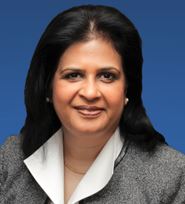The rise of passive investing in recent times has had a large influence on global fund flows. Country weights in the global benchmarks are increasingly determining the amount of funds that flow into various stock markets. The US with its 50% share in the global benchmarks has dominated the global investing scene for a very long time. However a market which has emerged from the shadows very rapidly in recent times has been China. Till recently largely accessed via its listings in Hong Kong and the US the mainland market labelled the ‘A’ share market has remained outside the purview of global investors. Starting in 2003 capital controls have been slowly loosened via its QFII and then its RQFII program and investors have been able to access the mainland A share market via pre-approved quotas. In November 2014 the Hong Kong Shanghai Connect program was launched which provided access to the Shanghai stock exchange listings through separate quotas and large daily limits not bound by the QFII and RQFII limits. Not surprisingly this far easier access has propelled the Chinese markets to grow more than 76% this year alone far outpacing India’s flat stock market performance.
As of now India has an approximately 10 % weight in the S&P Emerging BMI (Broad Market Index),while China which is represented only by Hong Kong, other overseas listings like the US and the mainland B share market accounts for a 31% weight. These numbers are similar across other competitor global benchmarks. Given the large push the Chinese government is making to open up mainland China shares to the global investing population another potential USD 3.8 trillion of investable market capitalization could be accessible for inclusion in the global benchmarks. If and when that happens, China’s weight in the emerging benchmarks will shoot up to 60% and pushing India’s weight down to 6% based on current numbers.
Currently only one third of the Indian market is available to global investors due to fairly stringent foreign investment restrictions. While China has similar restrictions but the sheer size of the market will add another $3.8 trillion to the investable pool with the opening up of the Chinese mainland market. Add this to the painful bureaucracy that most global investors have to face while investing in India, could well reduce the strong fund flows India has witnessed in recent times.
The posts on this blog are opinions, not advice. Please read our Disclaimers.



